
Posts Tagged: katydid
The Katydid Nymph Did
The katydid nymph did. It did appear in May. The UC Statewide Integrated Pest Management Program (UC IPM) tells us that katydid nymphs appear in our gardens in April or May. This little nymph was right on time, barely, as it surfaced in our Vacaville garden on May 28. The nymph, a...
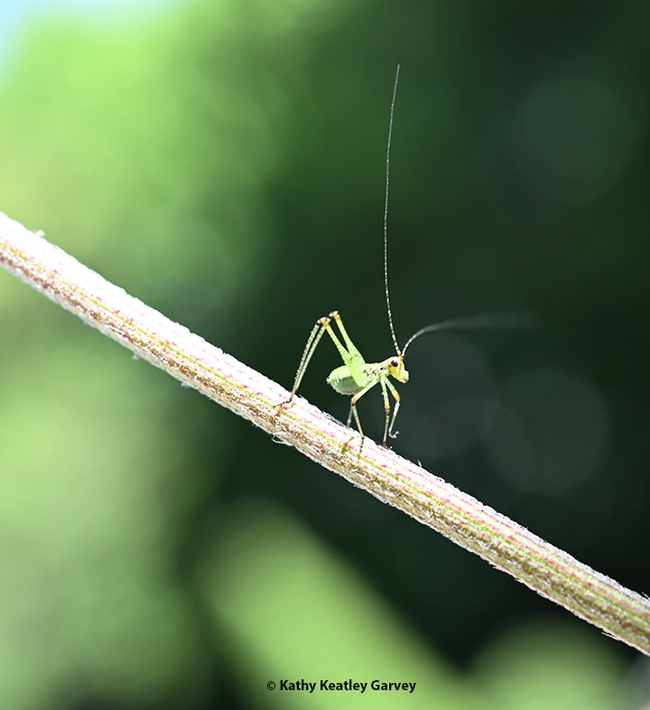
A katydid nymph, its long threadlike antennae upright, descends a stem in a Vacaville garden. (Photo by Kathy Keatley Garvey)
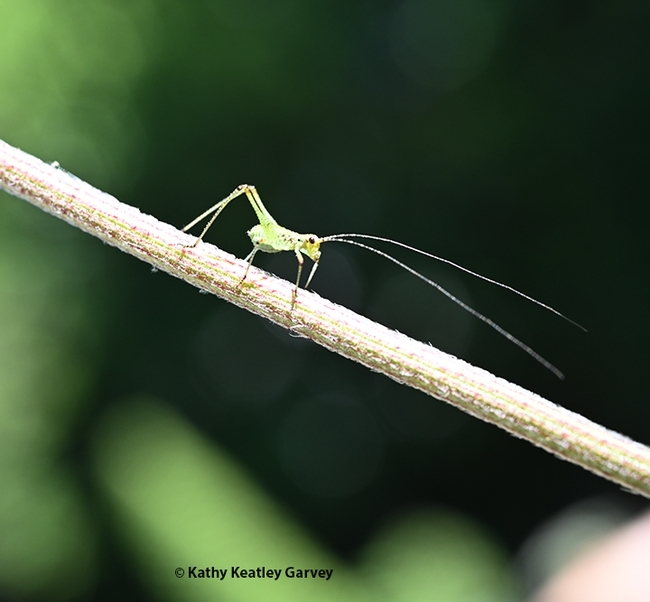
A katydid nymph, its long threadlike antennae upright, descends a stem in a Vacaville garden. (Photo by Kathy Keatley Garvey) The katydid nymph lowers its antennae and proceeds along the stem. (Photo by Kathy Keatley Garvey)
The katydid nymph lowers its antennae and proceeds along the stem. (Photo by Kathy Keatley Garvey)
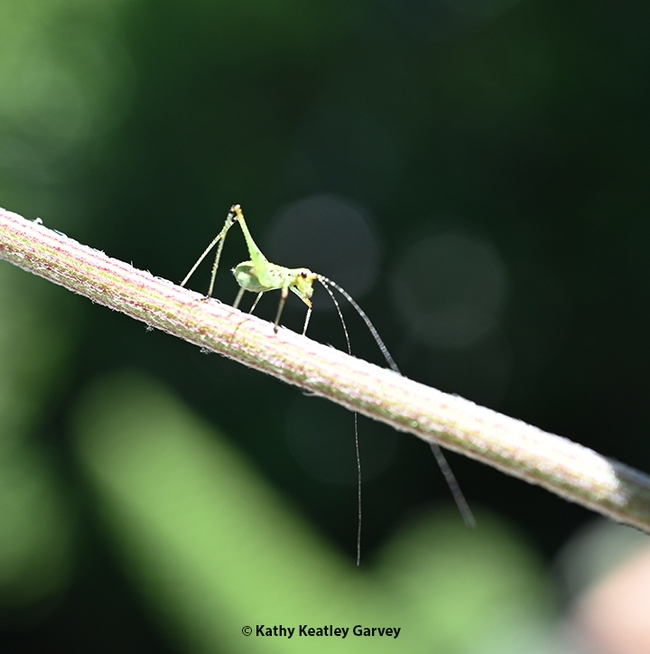
Antennae down, the katydid nymph continues its descent. (Photo by Kathy Keatley Garvey)
Mark Your Calendars! Bohart Museum Announces Special Events
Mark your calendars! Mark your calendars for the eagerly awaited open houses and special events at the Bohart Museum of Entomology. The Bohart has announced its 2024 special events, which include three open houses and participation in the 13th annual UC Davis Biodiversity Museum...
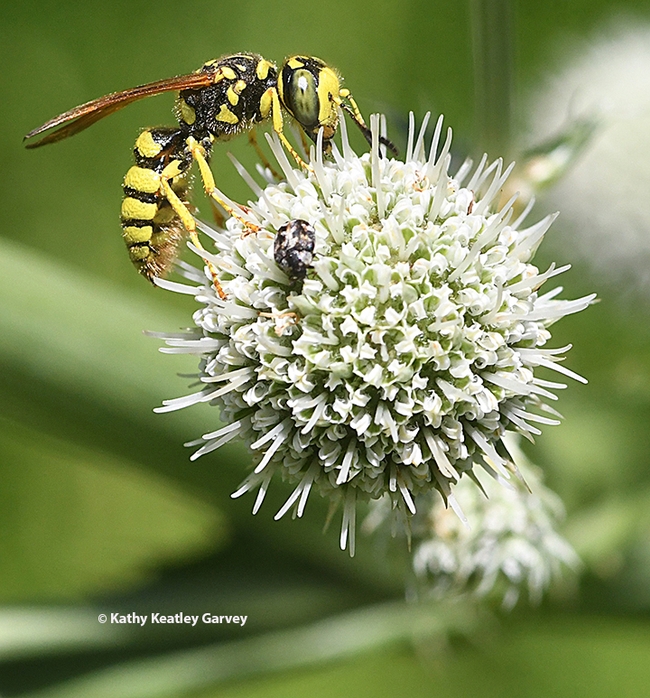
A crabronid wasp or beewolf in the genus Philanthus foraging on a pineapple sea lily (Eryngium horrium) in Vacaville. (Photo by Kathy Keatley Garvey)
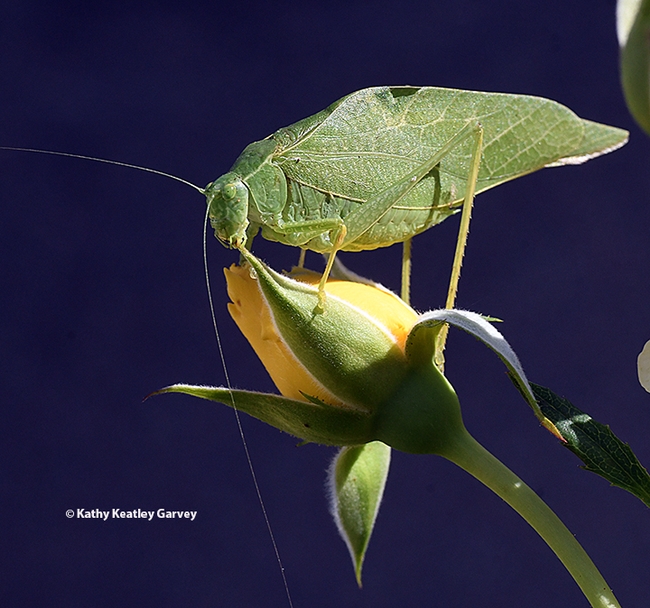
A katydid munching on yellow rose petals in a Vacaville garden. (Photo by Kathy Keatley Garvey)
Katydid: She Did, She Didn't, and Then She Did
In the blink of an eye... There it was, nestled inside a baby blue eyes blossom, Nemophila menziesii, which is a spring-blooming plant native to California, Oregon and Baja California. "It?" A katydid nymph, a wingless critter with long black-and-white banded antennae. The UC...
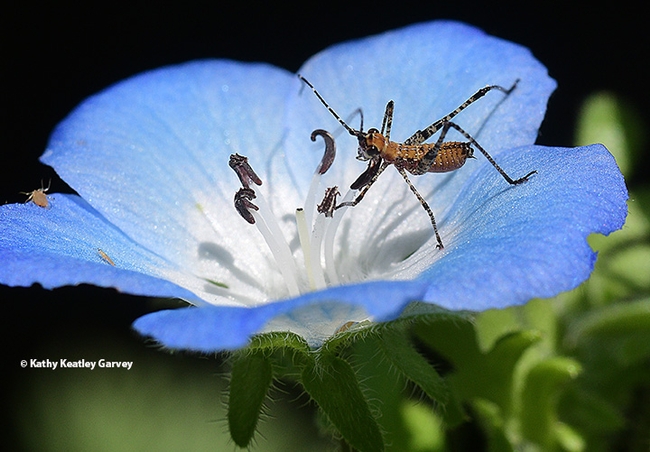
A katydid nymph nestled in a baby blue eyes blossom, Nemophila menziesii, in Vacaville, Calif. (Photo by Kathy Keatley Garvey)
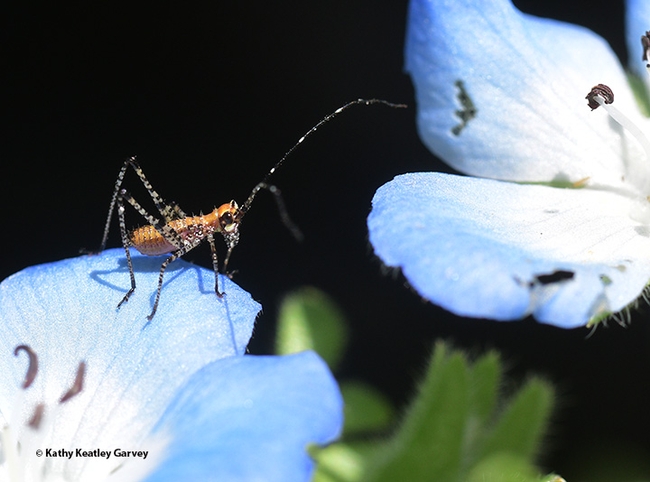
If the grass is greener on the other side, is a baby blues more blue on the other side? A katydid nymph gets ready to move. (Photo by Kathy Keatley Garvey)
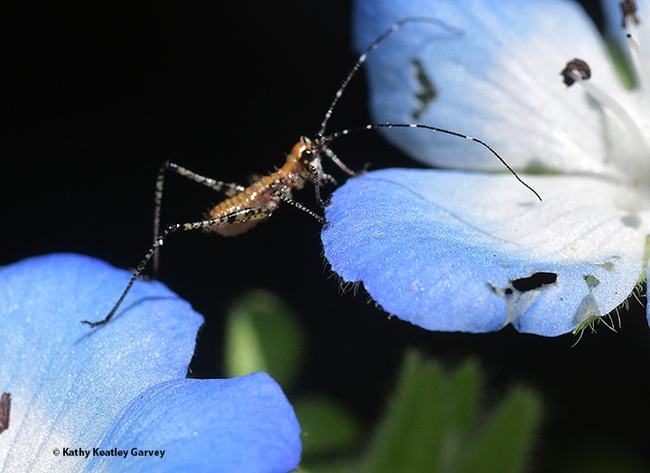
A long stretch, and the katydid nymph touches the next blossom. (Photo by Kathy Keatley Garvey)
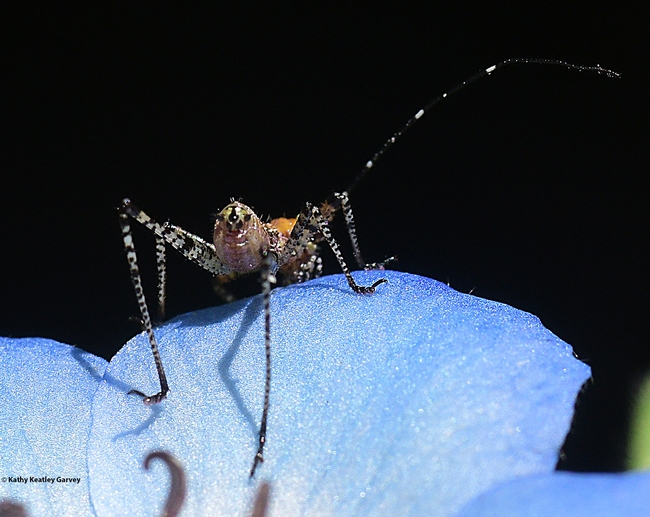
Up and over the baby blue eyes blossom, and the katydid nymph is gone. (Photo by Kathy Keatley Garvey)
Decisions, Decisions! The Katydid or the Bee?
So here's this crab spider stalking a katydid nymph foraging on a Mexican sunflower, Tithonia rotundifola. Dinner awaits! Suddenly a native bee, Melissodes agilis, lands next to the katydid and begins to sip some nectar. Decisions, decisions! Do I want a juice katydid nymph or a tasty...
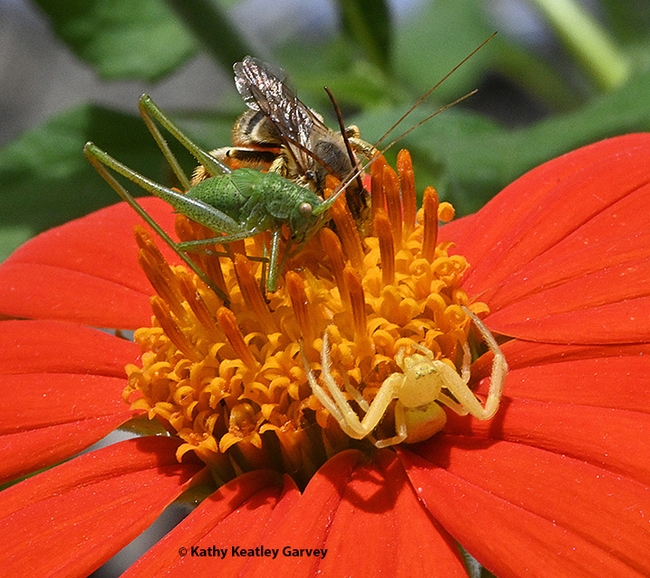
A crab spider is about to nail a katydid nymph when a longhorned bee, Melissodes agilis, appears on the Mexican sunflower. (Photo by Kathy Keatley Garvey)
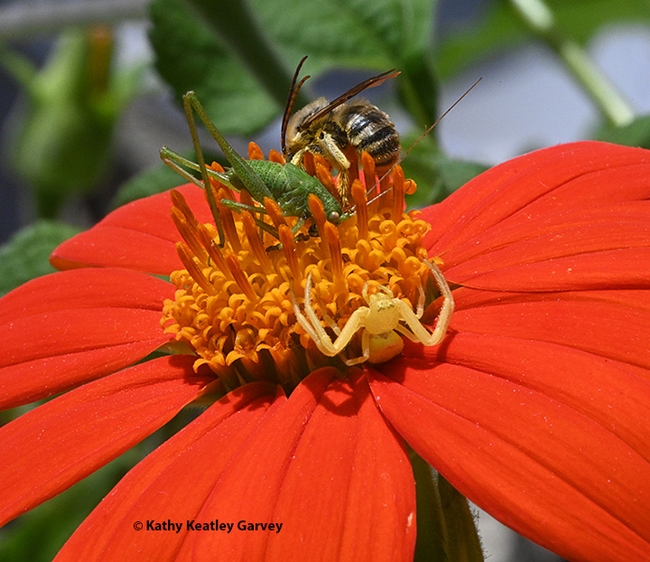
The longhorned bee, Melissodes agilis, continues to forage under the watchful eye of the crab spider. (Photo by Kathy Keatley Garvey)

The longhorned bee turns aways from the crab spider, still unaware of the danger. (Photo by Kathy Keatley Garvey)
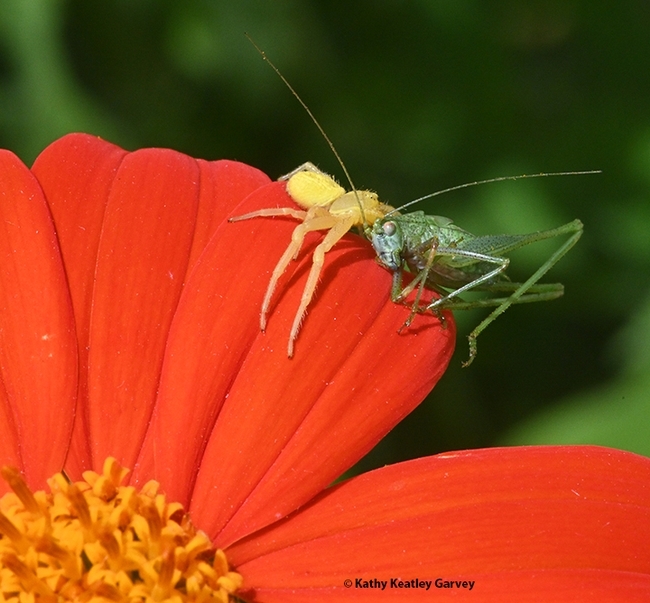
The crab spider hauls the struggling katydid nymph over the side of the Mexican sunflower. (Photo by Kathy Keatley Garvey)
Tough Day for a Tettigoniid on a Tithonia
It was a tough day for a Tettigoniid on a Tithonia. When a katydid (Tettigoniid) encountered a crab spider on a Mexican sunflower, Tithonia rotundifola, in our garden, the katydid didn't last long. The spider administered a venomous bite and it was all over. The small,...
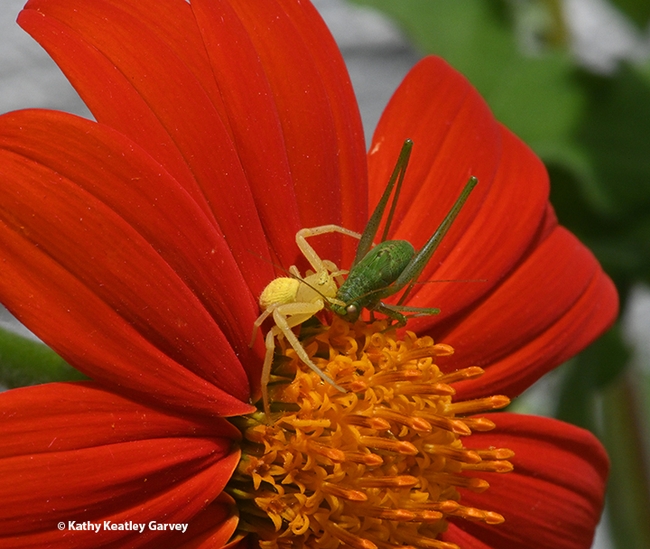
A crab spider administers a fatal bite on a katydid. (Photo by Kathy Keatley Garvey)
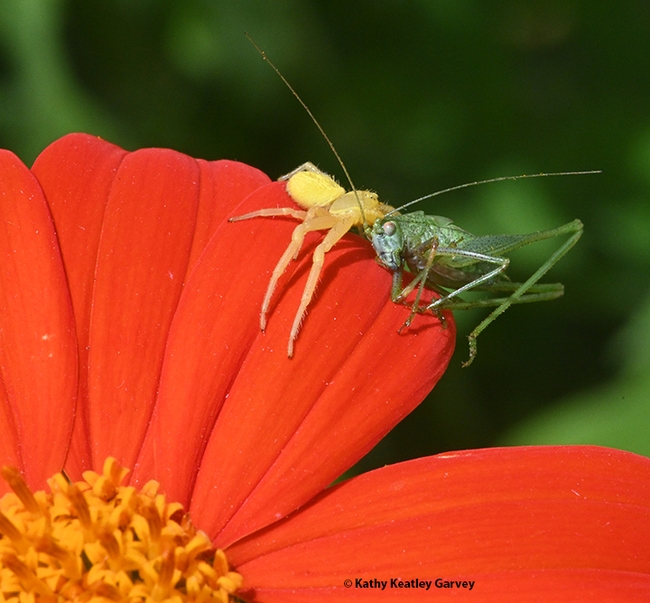
The crab spider drags its prey to the edge of the Mexican sunflower. (Photo by Kathy Keatley Garvey)
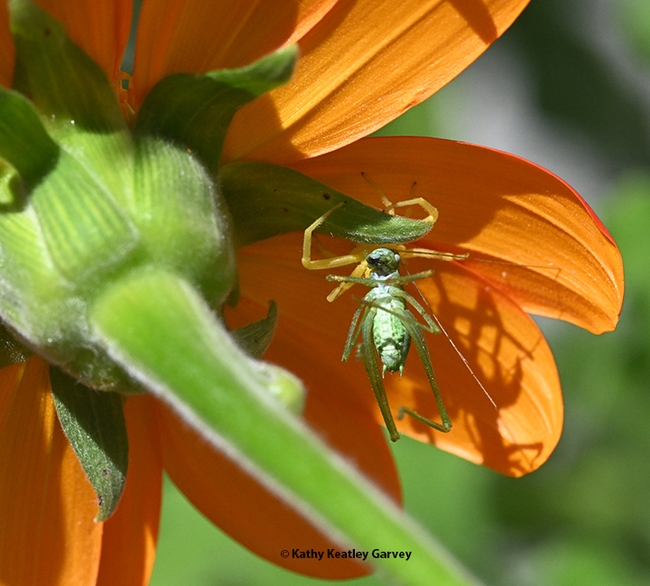
The crab spider, hidden from the world around it, consumes the katydid. (Photo by Kathy Keatley Garvey)
